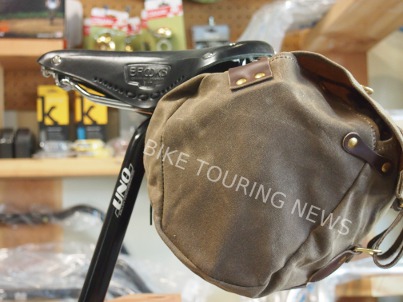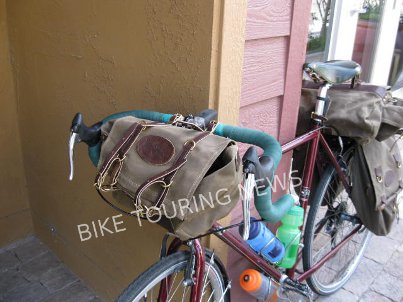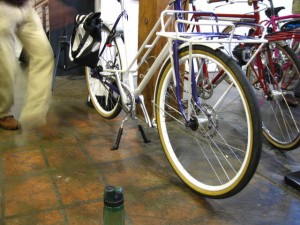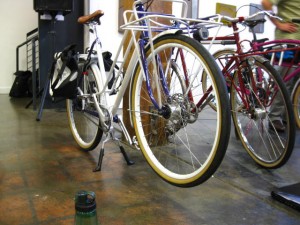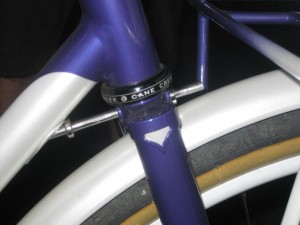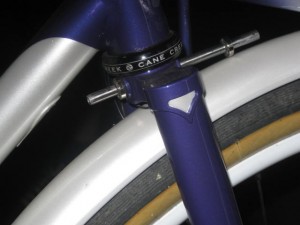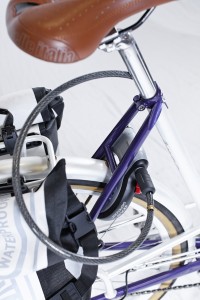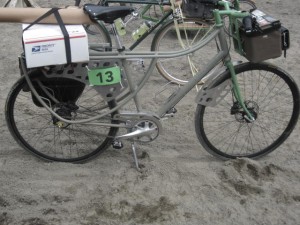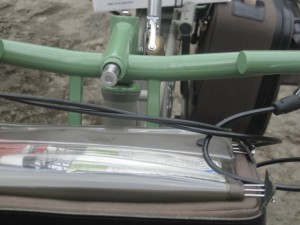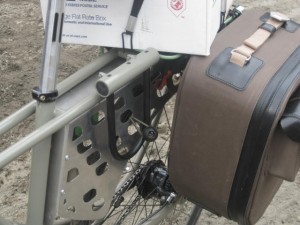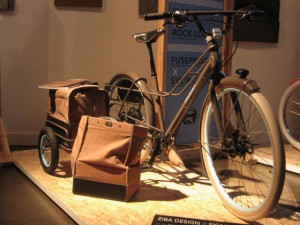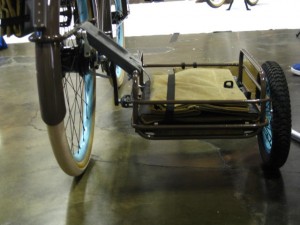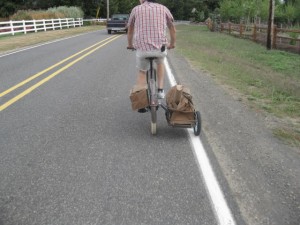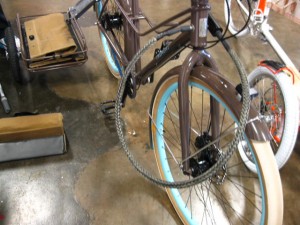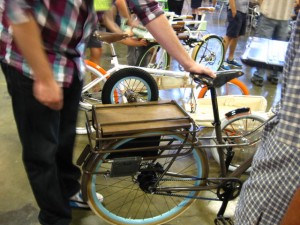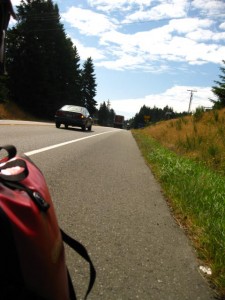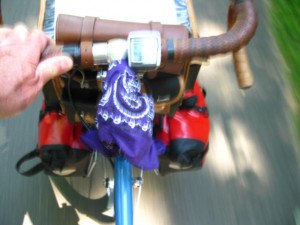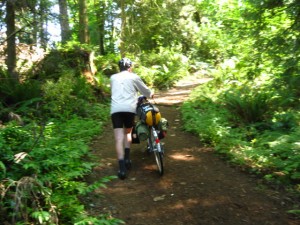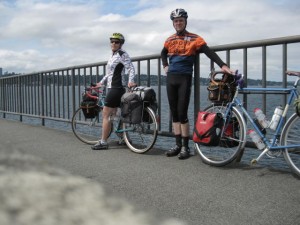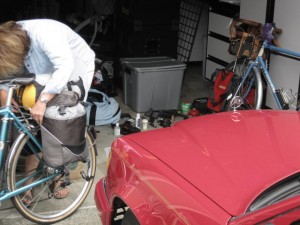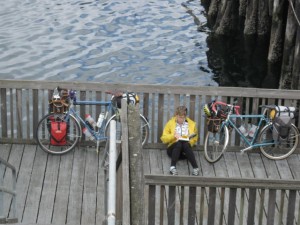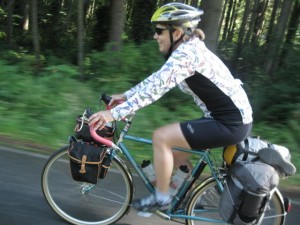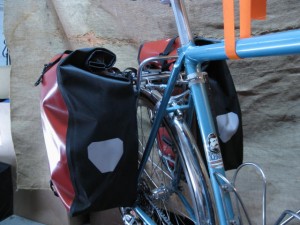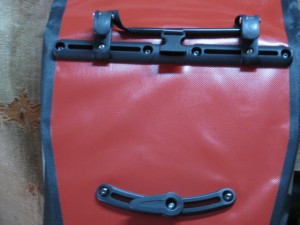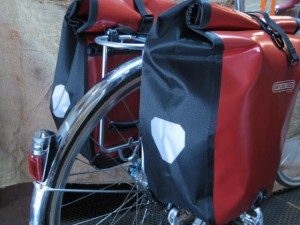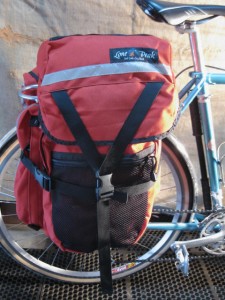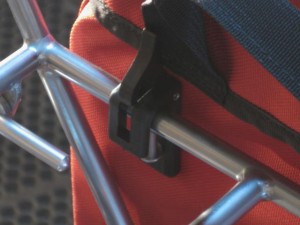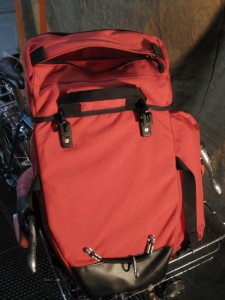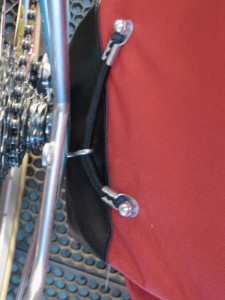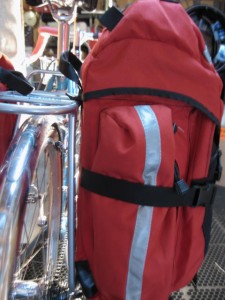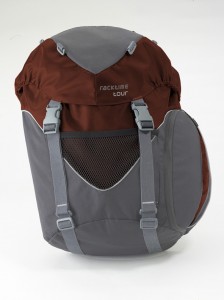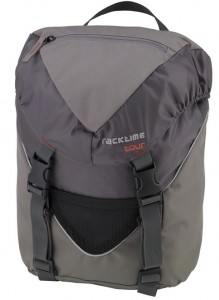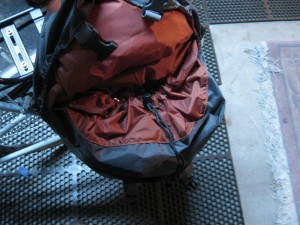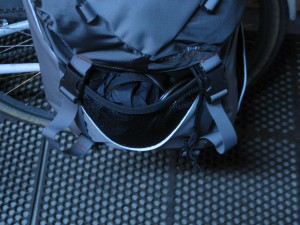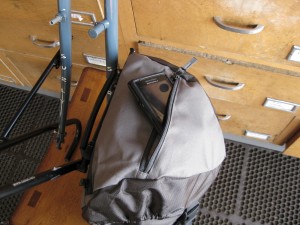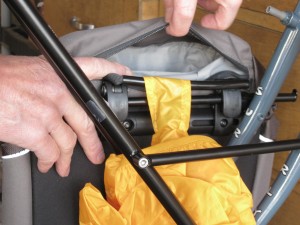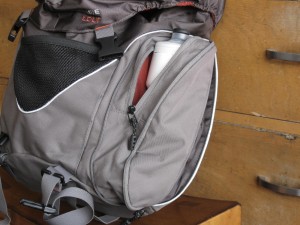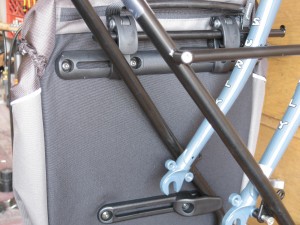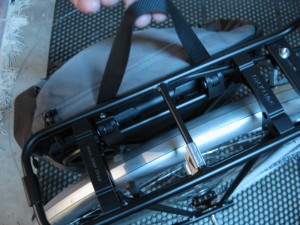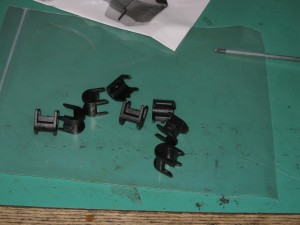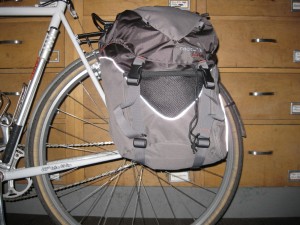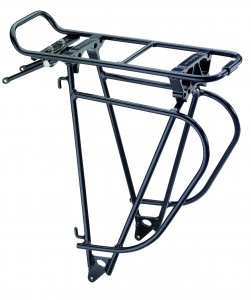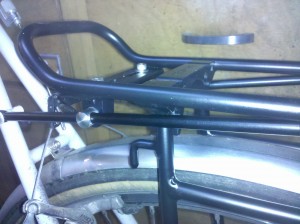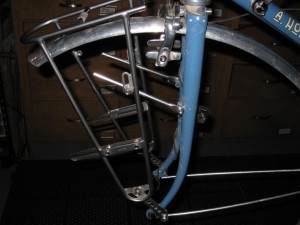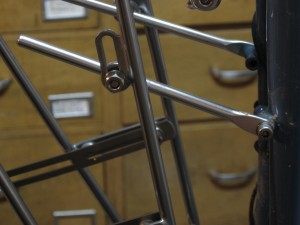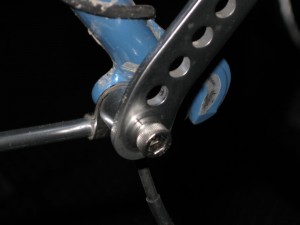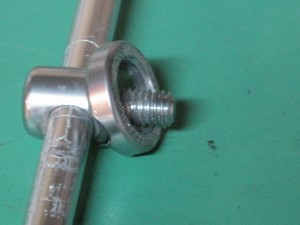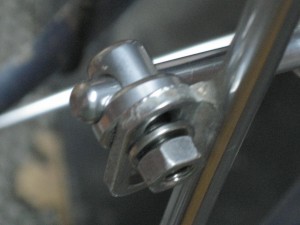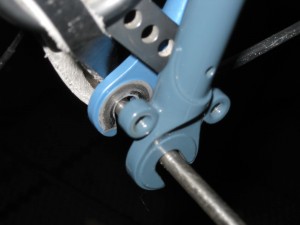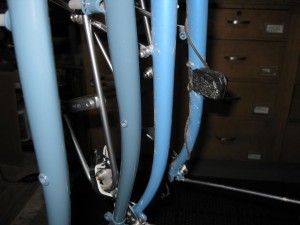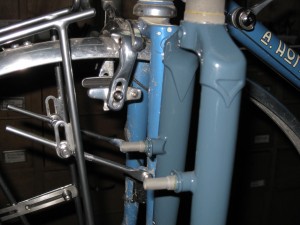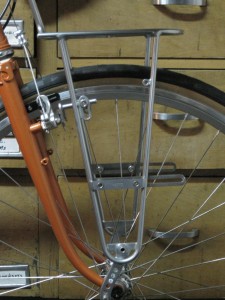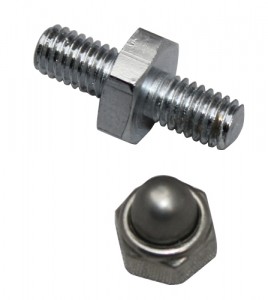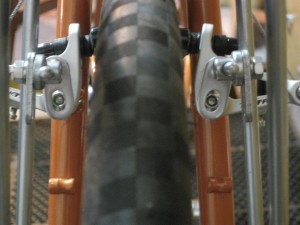The new shipment of Frost River bike bags arrived at the Bike Touring News Store last week. Frost River may be better known for their canoe packs than for bicycle touring bags but both should be held to the same standard –
“Canoe packs are built for a very specific task (hauling the stuff that will sustain you) in a very specific environment (the Northern Wilderness). In this setting, things like a seam ripping or a sidewall tearing or a strap breaking—little failures that would be an annoyance in everyday life—come with huge consequences.”
-And so it goes for bike touring.
Frost River makes their bags in Duluth Minnesota from materials sourced in the USA.
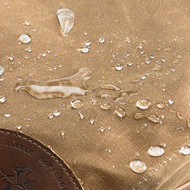
The waxed cotton canvas comes from Fairfield Textiles and is called Martexin Original Wax. The fabric is claimed to have a lifelong resistance to inclement weather as well as being naturally breathable. The hand is not course or stiff even though the canvas is stout. It is evident that the material is impregnated with wax rather than simply coated.
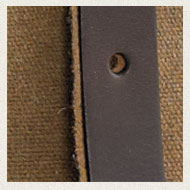
The leather in the straps and reinforcements comes from S.B. Foot Tanning Co. in Red Wing MN. Yes, that Red Wing. I currently have two pairs of Red Wing shoes and it’s sort of neat to know the leather in my bike bag comes from the same source!
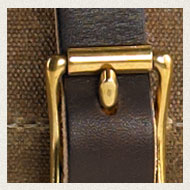
All the buckles, snaps, slides and d-rings are solid brass, not simply plated. And they are big. They might almost appear clunky to some but when fumbling with cold fingers and/or in the dark I think I will appreciate the large size.
The Gunflint Trail is the larger of the two traditional style “transverse” saddlebags from Frost River and it is big. The stated capacity is 20.6 liters but it seems larger…..maybe that doesn’t include the side pockets. And, while this bag could be used without a rack support, it sits very nicely on the Nitto R15 or R14 Top Rack.
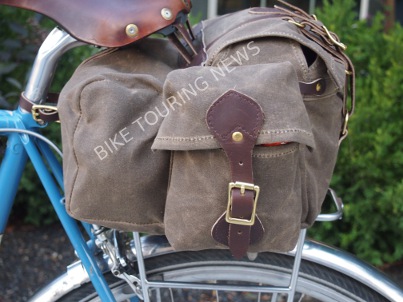
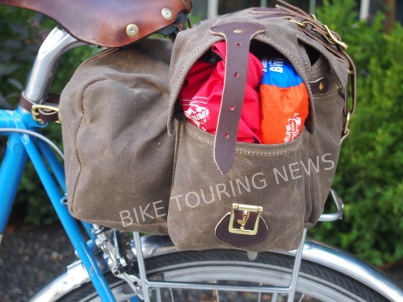

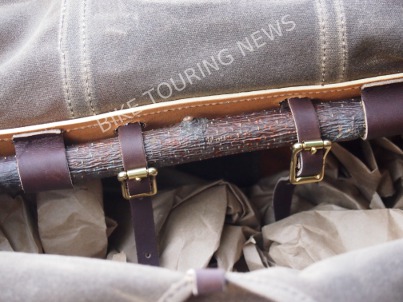
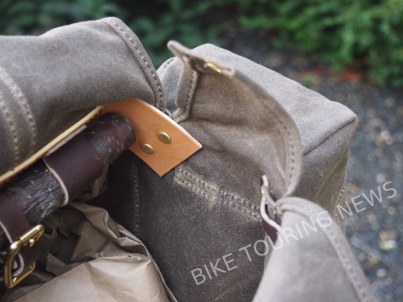
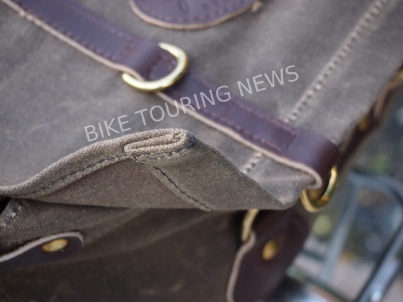

The Caribou Trail bag is an 8.8 liter capacity bag without side pockets. It works as a saddlebag but can also be strapped to the handlebars. A support such as the Nitto R10 rear bag supporter will keep the bag a little proud of the saddle and might prevent any unwanted side to side swaying.

